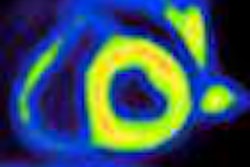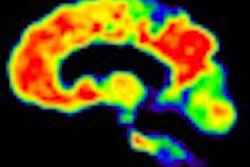Researchers from the University of California, San Francisco (UCSF) have found that the amyloid ligand Pittsburgh Compound B (PiB) with PET can offer more sensitivity than FDG-PET in discriminating between Alzheimer's disease and frontotemporal lobar degeneration (FTLD), according to a study in the November 29 issue of Neurology.
Dr. Gil Rabinovici, from UCSF's Memory and Aging Center, led the study of 62 patients with Alzheimer's and 45 patients with FTLD. All 107 patients underwent PiB and FDG-PET.
PiB scans were classified as positive or negative by two readers blinded to clinical diagnosis and using a quantitative threshold derived from 25 control subjects. FDG scans were visually rated as consistent with Alzheimer's disease or FTLD and quantitatively classified based on the region of lowest metabolism relative to controls.
PiB scans had an average sensitivity between the two readers of 89% for Alzheimer's, compared with an average of 77% with FDG, the researchers found. Average specificity was 83% with PiB and 84% with FDG.
When scans were classified quantitatively, PiB achieved sensitivity of 89%, compared with 73% for FDG. FDG had higher specificity at 98%, compared with 83% for PiB.
Rabinovici and colleagues also concluded that PiB "slightly outperformed" FDG in patients with known histopathology.




















